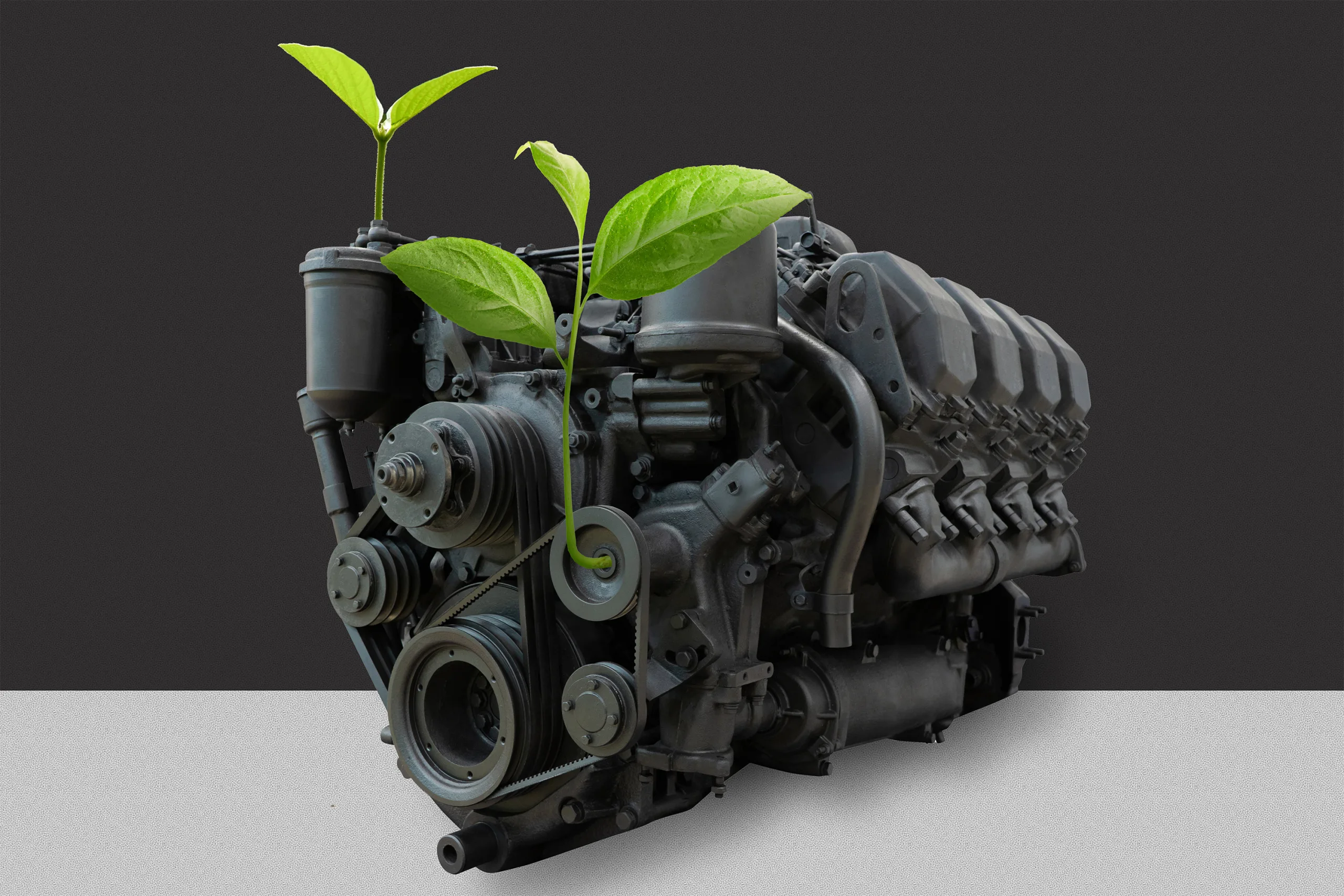Addressing methane emissions is critically important in the battle against climate change. Methane traps heat in the atmosphere with 84 times the potency of CO2 over a 20-year period, making its reduction a paramount goal.
While methane, primarily derived from natural gas, serves as a valuable fuel and a key ingredient in several essential chemicals, the challenge lies in the distributed nature of methane sources such as landfills, agricultural sites, and oil wells. These sites are relatively small and spread out, while conventional chemical processing is concentrated in large facilities. Consequently, capturing, transporting, and converting methane into beneficial products becomes economically challenging. Presently, many companies resort to flaring, or burning off, the methane, viewing it as a sunk cost and an environmental burden.
MIT spinout Emvolon is pioneering a fresh approach by transforming automotive engines into modular, cost-effective chemical plants for methane processing. By enabling on-site production of liquid fuels like methanol and ammonia, the company allows for easier transportation in standard truck containers.
“We envision a new method of chemical manufacturing,” states Emmanuel Kasseris, Emvolon’s co-founder and CEO. “By leveraging abundant methane emissions, we can tackle two major problems. Approximately 15 percent of global greenhouse gas emissions stem from hard-to-abate sectors such as shipping, aviation, and heavy-duty transportation. Another 15 percent originates from distributed methane sources like landfills and oil wells.”
Utilizing mass-produced engines eliminates the need for extensive pipeline infrastructure, making methane conversion an economically appealing solution for large-scale implementation. This system can also convert green hydrogen produced from renewable sources into ammonia, a fuel that contributes to the decarbonization of fertilizers.
“In the future, green fuels will be essential since large ships and planes can’t be easily electrified,” Kasseris emphasizes. “These vessels require high-energy-density, low-carbon-footprint, and cost-effective liquid fuels. The energy needed to produce these green fuels is either distributed, as seen with methane, or variable, such as wind energy. Thus, our modular design is optimally suited to meet these demands.”
From Concept to Company
Kasseris arrived at MIT in 2004 to pursue a master’s in mechanical engineering and conducted research on the future of transportation at the Sloan Automotive Lab. For his PhD, he focused on enhancing the fuel efficiency of internal combustion engines, collaborating with various automotive and energy firms post-graduation.
In 2014, Kasseris was approached by Leslie Bromberg, a veteran inventor with over 100 patents and a long-standing engineer at MIT’s Plasma Science and Fusion Center. Bromberg introduced Kasseris to a groundbreaking idea: repurposing an internal combustion engine as a methane reactor.
Bromberg had validated this concept through a U.S. Department of Energy-funded project, successfully utilizing a diesel engine to reform methane—a high-pressure chemical reaction combining methane, steam, and oxygen to yield hydrogen. This innovative work motivated Kasseris to return to MIT as a research scientist in 2016.
“We worked extensively on this concept until we decided to license the technology from MIT and accelerate our efforts,” Kasseris recalls. “MIT’s Technology Licensing Office made it seamless for us as MIT inventors, offering low-cost licensing options that are vital for startups.”
Emvolon continued to engage with the MIT research community by funding projects with Professor Emeritus John Heywood and participating in the MIT Venture Mentoring Service and the MIT Industrial Liaison Program.
Engine-Powered Chemical Manufacturing
At the heart of Emvolon’s innovation lies a standard automotive engine operating in a “fuel-rich” mode—utilizing a higher fuel-to-air ratio than conventional combustion requires. This technique, developed through MIT’s intellectual property, allows for partial oxidation of methane, transforming it into carbon monoxide and hydrogen, essential for synthesizing various chemicals.
The hydrogen and carbon monoxide produced serve as intermediates for further chemical synthesis, all conducted close to the engine, which generates its own power. Each of Emvolon’s modular systems, housed within a 40-foot shipping container, is capable of producing about 8 tons of methanol daily from 300,000 standard cubic feet of methane gas.
Starting with green methanol, Emvolon targets hard-to-abate industries such as shipping and heavy transport and envisions methanol’s utility as a crucial feedstock for high-value chemicals, including sustainable aviation fuel. Many shipping companies are making the switch to green methanol to align with decarbonization objectives.
This summer, Emvolon secured a Department of Energy grant to adapt its technology for creating clean liquid fuels from renewable sources like solar and wind power.
“We aspire to branch into ammonia production and explore additional feedstocks, including biomass and hydrogen from renewable electricity,” Kasseris shares. “Early results in exploration show promise as we seek viable solutions for the energy transition and future manufacturing.”
A Scalable Solution
Operating from its 5,000-square-foot headquarters in Woburn, Massachusetts, Emvolon has developed a system that can generate up to six barrels of green methanol per day.
“In chemical technology, scaling concerns often arise. Yet with an engine, if it operates effectively as a single-cylinder unit, we can confidently scale it to a multicylinder model,” assures Kasseris. “It’s just a matter of engineering.”
Recently, Emvolon announced a partnership with Montauk Renewables to establish a commercial-scale demonstration unit adjacent to a Texas landfill, initially producing 15,000 gallons of green methanol annually, with plans to scale this to 2.5 million gallons. Expansion across Montauk’s additional locations could enlarge this project tenfold.
“Our entire methodology is designed for a realistic energy transition. We aim to produce green fuels and chemicals at market-competitive prices today, eliminating reliance on subsidies. By utilizing engines as chemical plants, we can achieve capital costs per unit output comparable to larger plants, but at a modular scale that positions us close to low-cost feedstock. Furthermore, our modular systems necessitate smaller investments—ranging from $1 to $10 million—that can be deployed rapidly, avoiding the lengthy construction timelines and costs associated with large chemical plants,” Kasseris concludes.
Photo credit & article inspired by: Massachusetts Institute of Technology



